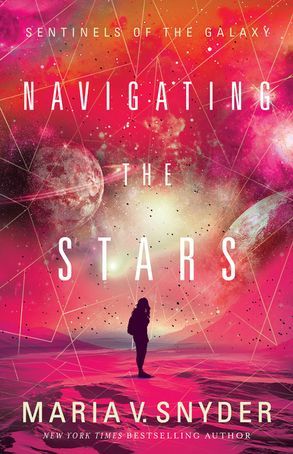Book Review: Navigating the Stars by Maria V Snyder (Sentinels of the Galaxy #1)
Navigating the Stars is set about 400 years in the future where armies of terracotta warriors, just like the Chinese ones on Earth, have been discovered on several other planets.
The story starts with 17 year old Lyra arguing with her archaeologist parents about travelling to a new planet from the one where they are currently stationed. Space travel technology causes a ‘time dilation’, meaning during the journey she will age only a few months while everyone else not on the spacecraft ages years. That is, when they arrive on the next planet, all her friends from their current posting will be around 50 and she’ll still be 17.
I liked both these ideas – the time discrepancy causing friends and family to make some tough choices, and the inclusion of the terracotta warriors. But there were some other ideas I wasn’t so fussed on.
The Qnet being one. Lyra is a ‘wormer’, which is basically a hacker. She ‘worms’ her way through the vast internet type system to solve a couple of the mysteries surrounding the warriors. I don’t think the net really made sense. It was this all encompassing key to everything in everyone’s life and yet it was illegal to go onto it. There are a couple of scenes when it’s explained to Lyra why she shouldn’t ‘worm’ but, overall, it doesn’t seem logical that the government/corporations of the day could be so easily compromised by teenagers. It also didn’t make sense that Lyra would be able to use the net to work things out that no other scientist around the universe could with just a couple of wriggles of her mouse.
I rarely read young adult books and Navigating the Stars never made me want to rush out and correct this imbalance. (The fact that teenagers are always the ones to save planets/universes etc usually elicits memories of hilarious memes mocking the genre.) The romantic storyline catering to a young female audience was predictable and actually really quite awkward at times. But the thing that *really* annoyed me was Lyra’s way of speaking. Okay, I’m not expecting writers to come up with a whole new language for their characters but I really don’t think teenagers will be using the same slang in the 2400s as they do in the 2000s. They don’t even use the same slang they did 5 years ago, for goodness sake.
There are a couple of mystery plots, some better than others. I really liked the one featuring the disappearance of an entire planet’s inhabitants; the whereabouts and fate of all the scientists and archaeologists being unknown. I also enjoyed the question of who built the warriors, and when and why. The mystery plot speculating on the identity of the head of the criminal gang attacking the planet to loot the warriors, however, was far too obvious and it wasn’t even the best reveal.
I don’t think hardcore scifi fans would be too impressed. I guess it could be a nice introduction to the genre but, truly, I think the target audience is younger women who don’t usually read scifi.
I had slated the remaining books of this trilogy into my book challenges for the year and I’ll probably still read them; I’m hoping I might enjoy the sequels a little more (as Lyra grows up and Snyder doesn’t need to explain the universe as much), fingers crossed. 3 out of 5
